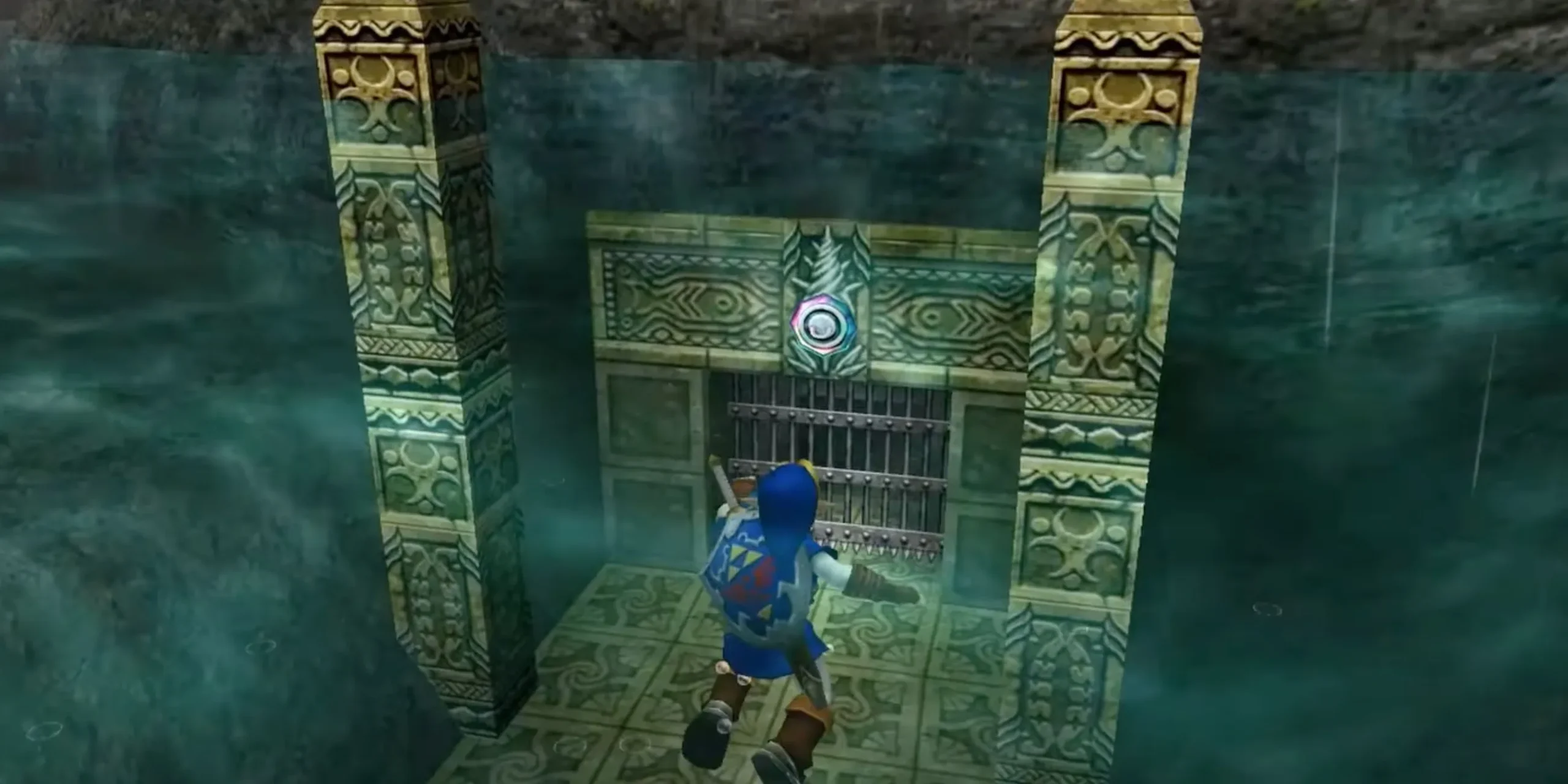
After recently revisiting The Legend of Zelda: Ocarina of Time on Nintendo Switch Online, my perspective on the infamous Water Temple evolved significantly. In my school days, when my friends and I first encountered this challenging dungeon, it was widely regarded as one of the toughest in the game. In fact, I was so discouraged by it at one point that I paused playing altogether.
For many years, I accepted the consensus that the Water Temple was exceptionally hard without questioning it further. For those of us in that age group, it became an accepted reality. Now, as an adult gamer who has tackled the harrowing challenges presented in FromSoftware’s Soulsborne titles, I still find the Water Temple frustrating. However, I’ve come to realize that its level of difficulty may be exaggerated.
Why Was the Water Temple So Hated?
The Temple’s Design Imposed Unique Challenges



The Water Temple introduced several features that frustrated players upon Ocarina of Time’s release. The first and foremost challenge was the water level adjustments. Failing to thoroughly explore every room at a certain water level forced players into a cycle of lowering, adjusting, and raising the water again—a process that required significant backtracking.
Additionally, the introduction of the Iron Boots added complexity. These boots were necessary for diving and swimming through the water, but often dictated a tedious back-and-forth between swimming and walking. Essentially, players had to remove and re-equip these cumbersome boots numerous times just to navigate a single room.
The cumbersome nature of the Iron Boots made this experience irksome due to the need to access the start menu constantly. For example, players would move a few steps, pause the game, remove the boots, swim, pause again to re-equip them, and repeat the process. As daunting as it sounds to read, experiencing it in-game is exponentially more exhausting.
Fortunately, the 3DS remake of Ocarina of Time transformed this aspect by allowing players to switch the Iron Boots on and off with the same controls used for standard items, enhancing the gameplay experience. While the original N64 version of the Water Temple is notorious for its infamy, I am starting to question whether it deserved its reputation for being genuinely difficult.
Is the Original Water Temple Truly Difficult?
Reevaluating the Difficulty of the Water Temple

The Water Temple’s elevated status of difficulty seems to stem from a misunderstanding of standard Zelda mechanics. Typically, Zelda dungeons grant players access to a finite segment of the area to explore without needing to find a key or item immediately. Players succeed by diligently examining each room, confident that they will uncover something to advance their journey.
However, the Water Temple incorporates a unique twist with its adjustable water levels. This design forces players to keep track of their exploration and revisit rooms with varying water heights. Consequently, this trial-and-error approach introduces many combinations and layers to the dungeon, leading to the perception of heightened difficulty.
Despite this perception, I argue that the Water Temple is not fundamentally more challenging than other Zelda dungeons; rather, it’s more tedious due to its mechanics. The same exploration strategy applies, but players may find themselves spending extra time solving puzzles due to the numerous water level variations.
The Water Temple: Frustrating, Not Hard
A Distinction Between Difficulty and Frustration

There is often an unfair conflation of difficulty with frustration in gaming. A truly difficult game becomes progressively easier as players master it. For instance, my initial experience with the Soulsborne title Bloodborne was fraught with difficulty in Central Yharnam. However, after several playthroughs, I can now navigate that area with ease, showcasing how skill development leads to mastery.
In stark contrast, the Water Temple does not allow for such improvement. Players may memorize puzzle layouts to save time, yet they will still find themselves perpetually raising and lowering water levels and managing the Iron Boots. The frustrating elements never disappear regardless of a player’s skill level, as they stem from the dungeon’s design rather than the player’s lack of ability.
Flaws in Zelda’s Dungeon Design
A Tradition of Frustrating Zelda Dungeons

As a longtime fan of the Zelda series, I’m somewhat disheartened to see game innovations like Breath of the Wild moving away from traditional 3D dungeon designs. Experiencing the City in the Sky with the Double Clawshot in Twilight Princess represents a pinnacle of gameplay design for me. However, the Water Temple is far from the only instance of frustrating dungeon execution in the series.
For example, the Ice Palace in A Link to the Past is another notorious offender. Players encounter obstacles like slick ice floors, which make movement chaotic and can send Link reeling into traps when attacking enemies. Many players resort to clinging to doorways, firing ranged attacks to eliminate foes from safety.
Following Ocarina of Time, Majora’s Mask presented Great Bay Temple, featuring its share of backtracking challenges. The Lanayru Mining Facility from Skyward Sword introduces mundane tasks like clearing sand with the Gust Bellows, feeling less like an adventure and more like mundane chores.
While the Water Temple certainly deserves its reputation for being tedious and frustrating, it isn’t singular in that regard. Although it may remain a sore point for many nostalgic players like myself, I no longer regard it as an outright difficult dungeon but rather as one of many instances of design missteps within an otherwise remarkable game.




Leave a Reply